Virtual Museum
Some of the most interesting artifacts I own I display in showcases. These consist of (personal) metal detecting findings and inherited family items supplemented by some very (special) specific relics.
!!! Some photographs depict the swastika. I do not support or want to express any (political) national-socialist ideas. I merely regard the swastika as an historical symbol. I disapprove any (neo) nazi ideas!!!
AMMUNITION - some showcases display ammunition fragments. BE CAREFUL when finding these - see my Metal Detecting page. All my findings are used cartridges without bullets, powder or live unused caps. All other pieces are harmless metal fragments.

Most special personal metal detecting findings - not even 1% of everything I found. Napoleonic army (regimental) buttons (1795-1815), medieval pottery, fragment of "Schnelle" (1560-1592), cloak-hooks, late-medieval and silver buttons, buckles (Spanish sieges), spindle whorls, weights and lead seals.
Best coins: silver 25cents Willem II (1848), James III Sctoland hammered penny (1460-1488), Liard (1712), silver State of Venice coin (1501-1521)
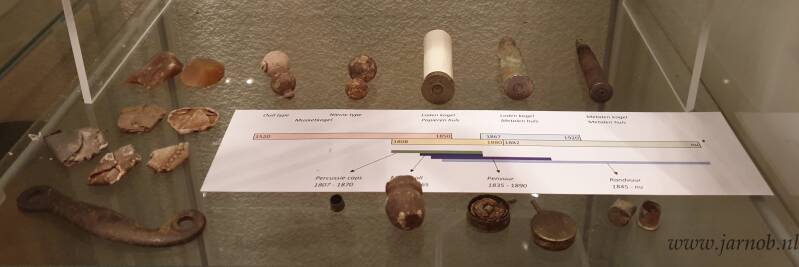
Personal metal detecting finds explaining and showing the history of the bullet: from pre-muskets, to muskets, to bullet shaped, to bullets with paper cartridges, pinfire, rimfire, copper cartridges.
To the utmost left a musket side plate, flints and lead flint-holders.
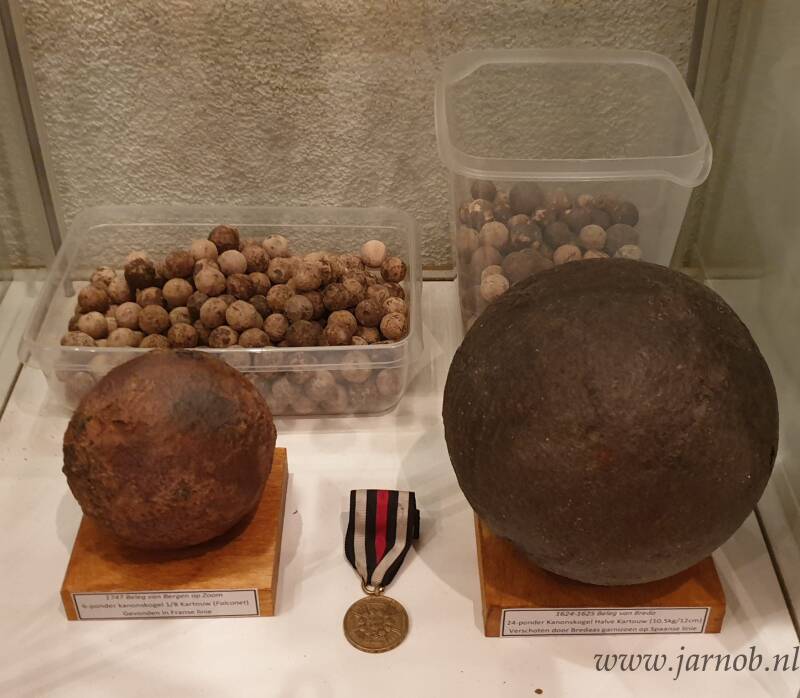
Metal detecting finds; many musket bullets, to the right a 'Halve Kartouw' canonbal, 24-pound (10.5kg/12cm) used by the Dutch troops in Breda during the Siege of Breda around 1624-1625 against the encircling Spanish troops.
To the left all musket bullets used during the Siege of Bergen op Zoom around 1747 by French troops against Dutch. The canonbal is a '1/8 Kartouw' 6-pounder 'Falconet'.
The centre medal is bought; it is a German victory medal of the Franco-Prussian war of 1870-1871. These were made of melted-down French artillery pieces.
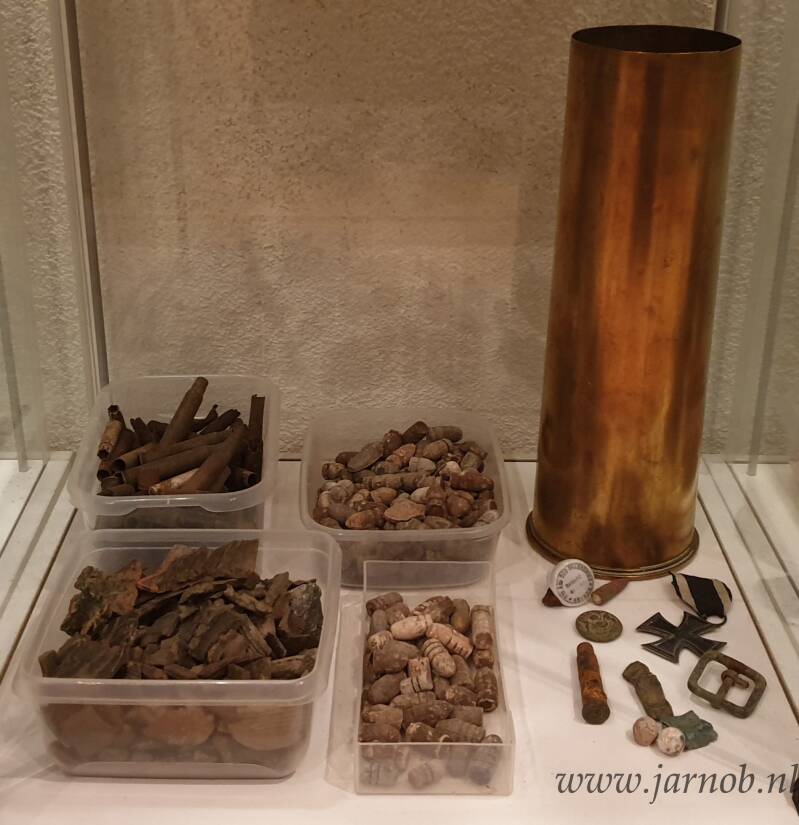
Upper left 20th century modern post-ww2 copper cartridges, down left ww2 Flak strips, two center trays lead bullet shaped 1860-1900 era bullets.
To the right ww1 relics which I bought at Ieper: a large French copper shell cartridge, a British uniform button, buckle, two lead shrapnel balls, a British spent copper cartridge, bullet and a beer bottle cap.
The small shrapnel piece I found near trenches in Ieper. The German ww1 Iron Cross was already in my collection.

Metal detecting findings: all around area's in Holland were German paratroopers (Fallschirmjager) had fought. The German Helmet was found by a friend of mine when we were searching. It has a two tone camouflage scheme and decal on its left hand side.
All cartridges are German, the buttons are Zeltbahn buttons (tents also used as camo smocks), Luftwaffe (Fallschirmjager) steel belt buckle, 81mm mortar tail, fragments of a gasmask holder lid and a large piece of MG 7.92mm ammo case.
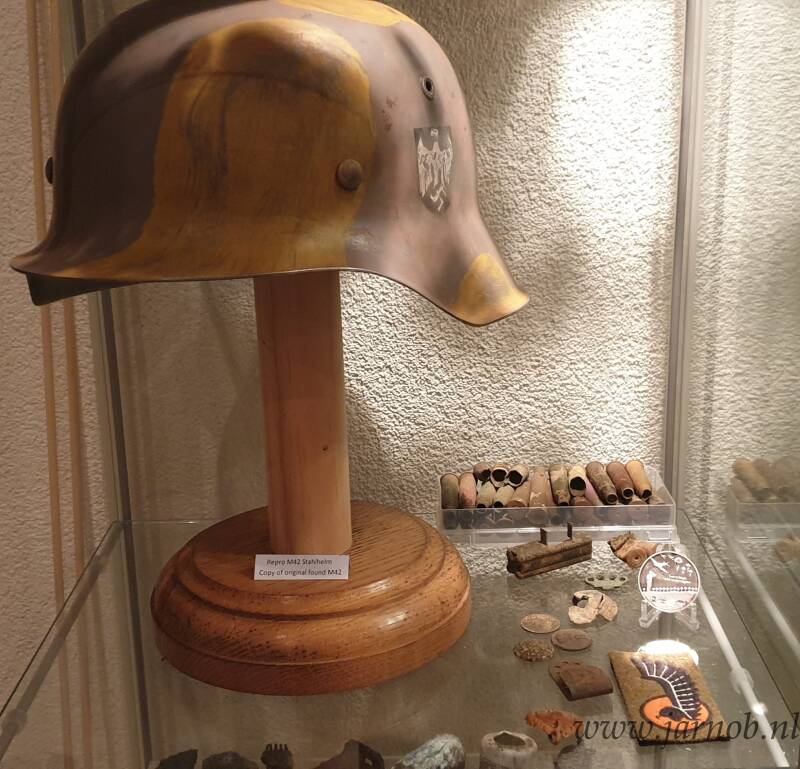
A repro helmet bought by myself and painted the same as the above found helmet, weathered and scratched in order to reproduce a matching sample.
To the right Dutch Hembrug trifle spend cartridges, Hembrug rifle barrel cover and some other Dutch ww2 army relics.
The Polish tank brigade badge (which fought over here in Holland 1944/1945) was bought - i search on many of their battlefields.
The coin is a 75 years Market Garden memorial coin.

Metal detecting Allied battlefield findings.
Upper left corner 20mm allied fighter bomber (Spitfires, Typhoons) canon cartridges.
Two Canadian mortar tails. Large almost complete detonator Canadian (British) QF 25-pounder artillery shell fragments (type No117 and No119 Graze).
Several fragments of different types of artillery and mortar shell/ detonators. Large piece of aircraft bomb detonator (mechanism) fragment.
Lower right corner small arms bullet cartrides; .303 Enfield, 30-06 Browning, 9mm Sten gun and aircraft (bomber) .50's.
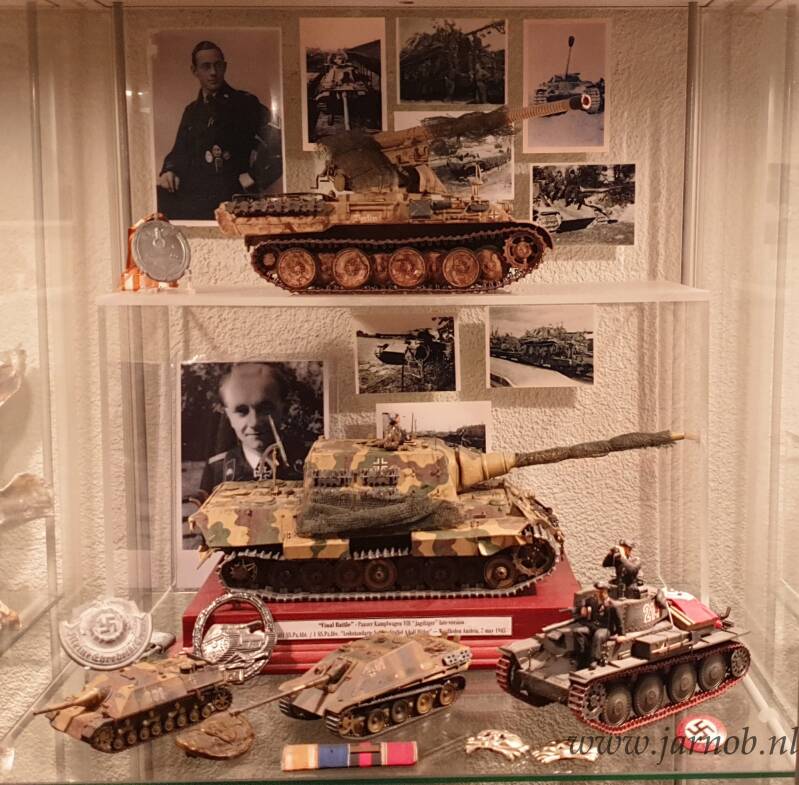
Several model kits: fictional PaK43 88mm on Bergepanther carriage (final battles), Jagdtiger LSSAH final battles Austria), Panzer 38(t) Sudetenland occupation 1938, Jagdpanther and Jagdpanzer IV.
Supplemented by some panzer photo copies and a originally signed portrait copy of Ritterkreuztrager Otto Carius who fought using a Jagdtiger at the end of ww2.
Original Westwall medal, original NSDAP party badge, original (damaged) wounded badge in black found around Stalingrad, two original Panzertruppe deaths head, original type 1958 Panzerkampfabzeichen 50, original Waffen SS officers belt buckle fragments, original German 'spange'. All items are bought by myself during the past 15 years.
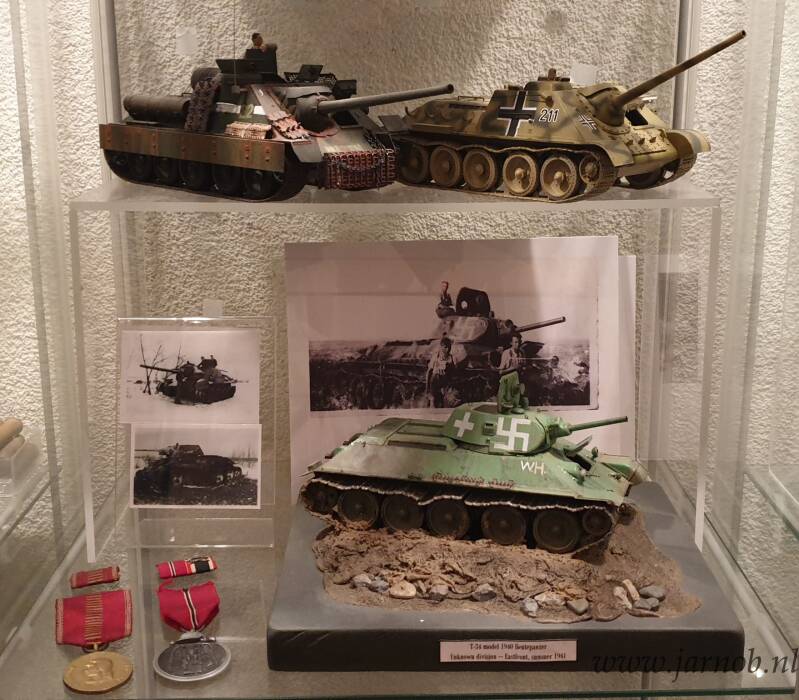
Model kits Russian SU85 'Beast' as used during the 1945 Berlin battles, beutepanzer SU85 copied exactly from known photographs, beutepanzer T34 model 1940 copied from my own collection original photograph - as can be seen in the photograph copy behind it.
Two more photograph copies and original bought medals: Rumanien medal and Winterschlacht im Osten 1941/1942 medal.
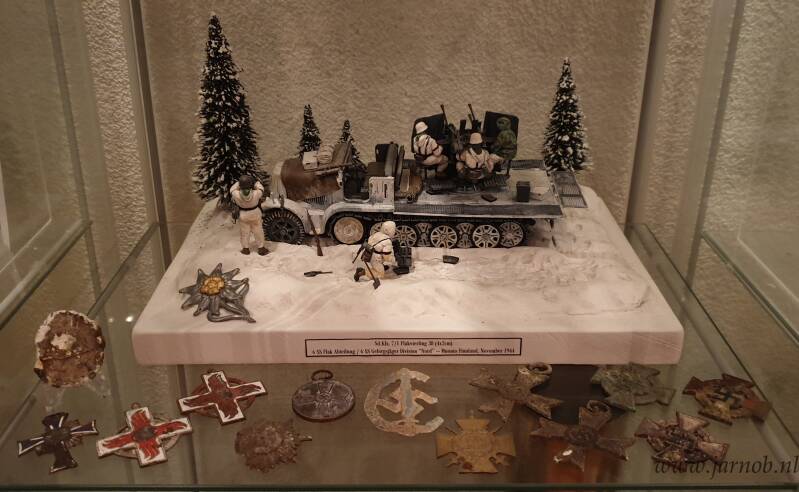
Model kit, VierlingsFlak 4x20mm on Halftrack SdKfz7 Waffen SS Mountain Division depicting a scene from the book 'Black Edelweiss' were it was used in ground warfare during a fierce continuous fighting retreat against Russian Forces.
Original Edelweiss insignia mountain troops, detector finding silver wounded badge found near Berlin, beneath many detector findings - different types of medals, all found around an area were German troops surrendered.
All findings are bought.

Different aircraft parts of two different crash sites: one site of a T34 (post ww2) and one site of a recce Spitfire PR IV (ww2). Many cockpit fragments, all found by myself.

Original Panzerkampfabzeichen (removed swastika), Infanterie Sturmabzeichen, Allgemeines Sturmabzeichen and an Eisernes Kreuz 2e klasse - all bought.

All bought repro's: Nahkampfspange, Eisernes Kreuz 2e klasse, Infanterie Sturmabzeichen.
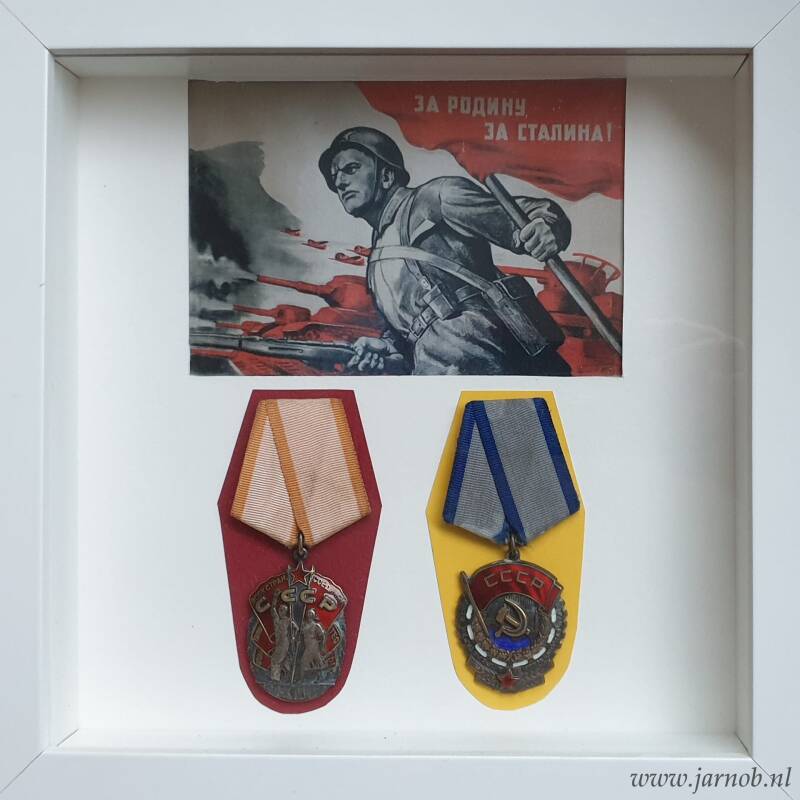
Two original, numbered Russian ww2 medals: Order of the Red Banner of Labour and Order of the Badge of Honour - both bought.

Collection of so called 'mouwleeuwen' (uniform sleeve lions). These are worn by all Dutch (army) soldiers since 1941. In my collection is the very first model as well as several Dutch East-Indies models, gold thread embroidered officer uniform models all the way to the current type. I will explain all single models of my collection on the 'KNIL' page.
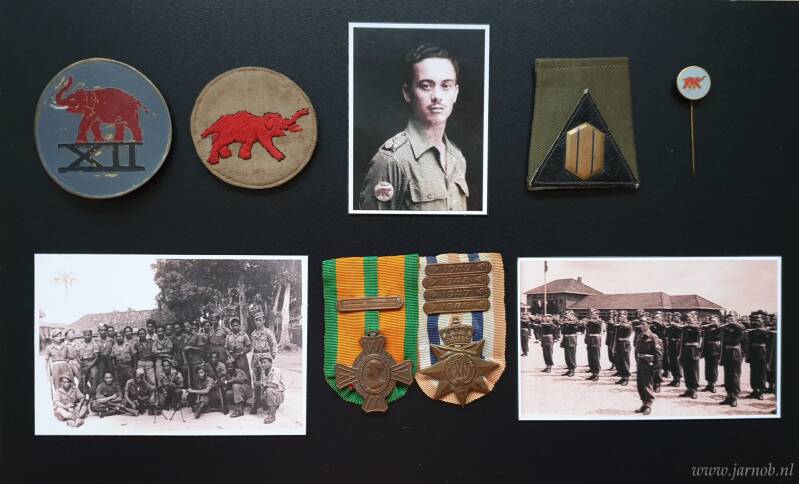
Tribute to my grandfather T.J. 'Tek' de Wit.
His original medals, Oorlogsherinneringskruis with clasp 'Nederlands-Indie 1941/1942', and Ereteken voor Orde en Vrede with clasps '1946', '1947', '1948' and '1949', and original pin 'Gadja Merah'.
KNIL Inf.Bat. XII metal shield, Gadja Merah badge and KNIL sergeant insignia are all bought to supplement the tribute.
Two photographs of my grandfather with his unit - the left one on Bali 1947 and the right one in Holland 1954.
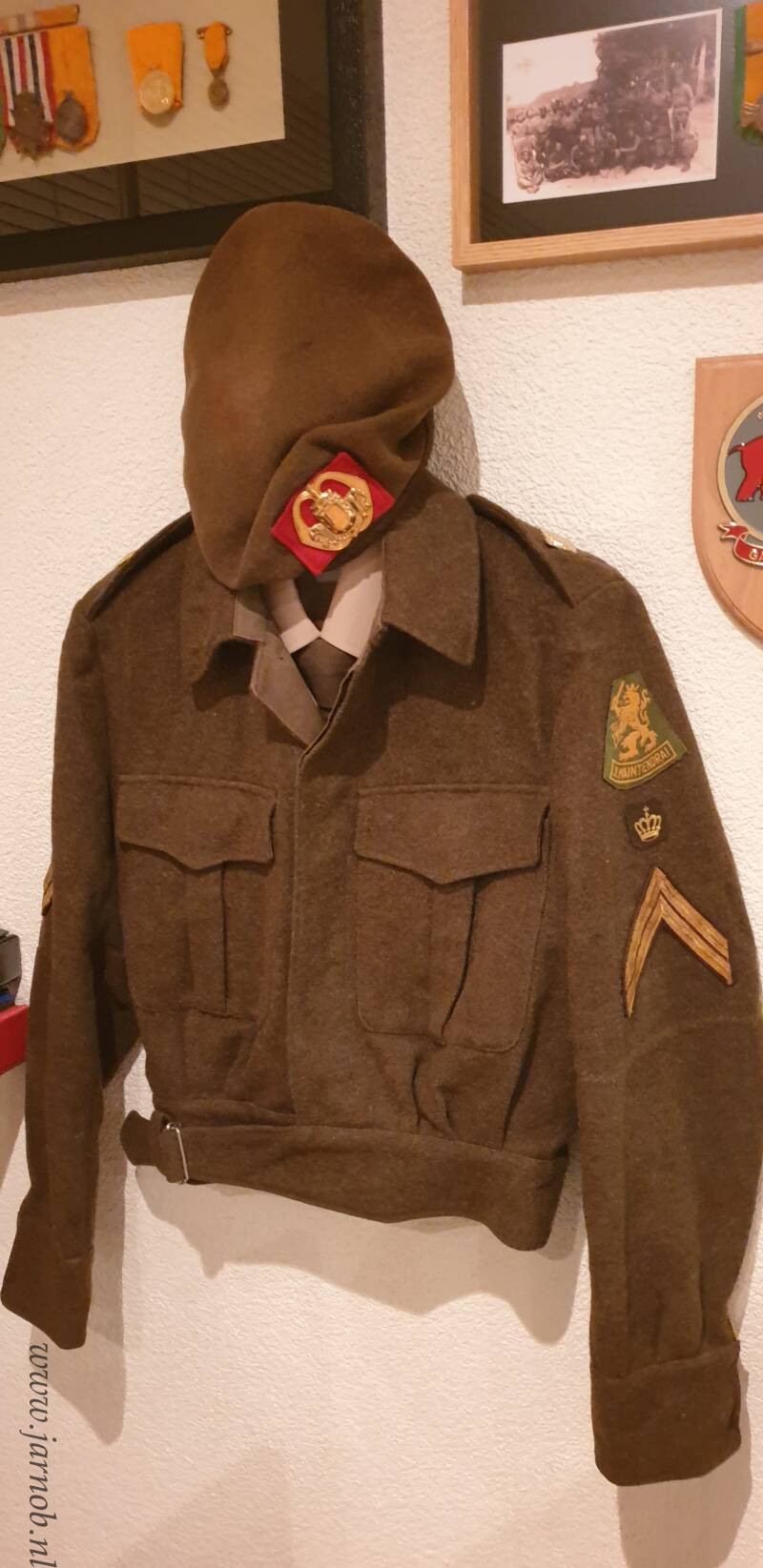
My grandfathers original Dutch post-ww2 uniform supplemented with some insignia's and beret.
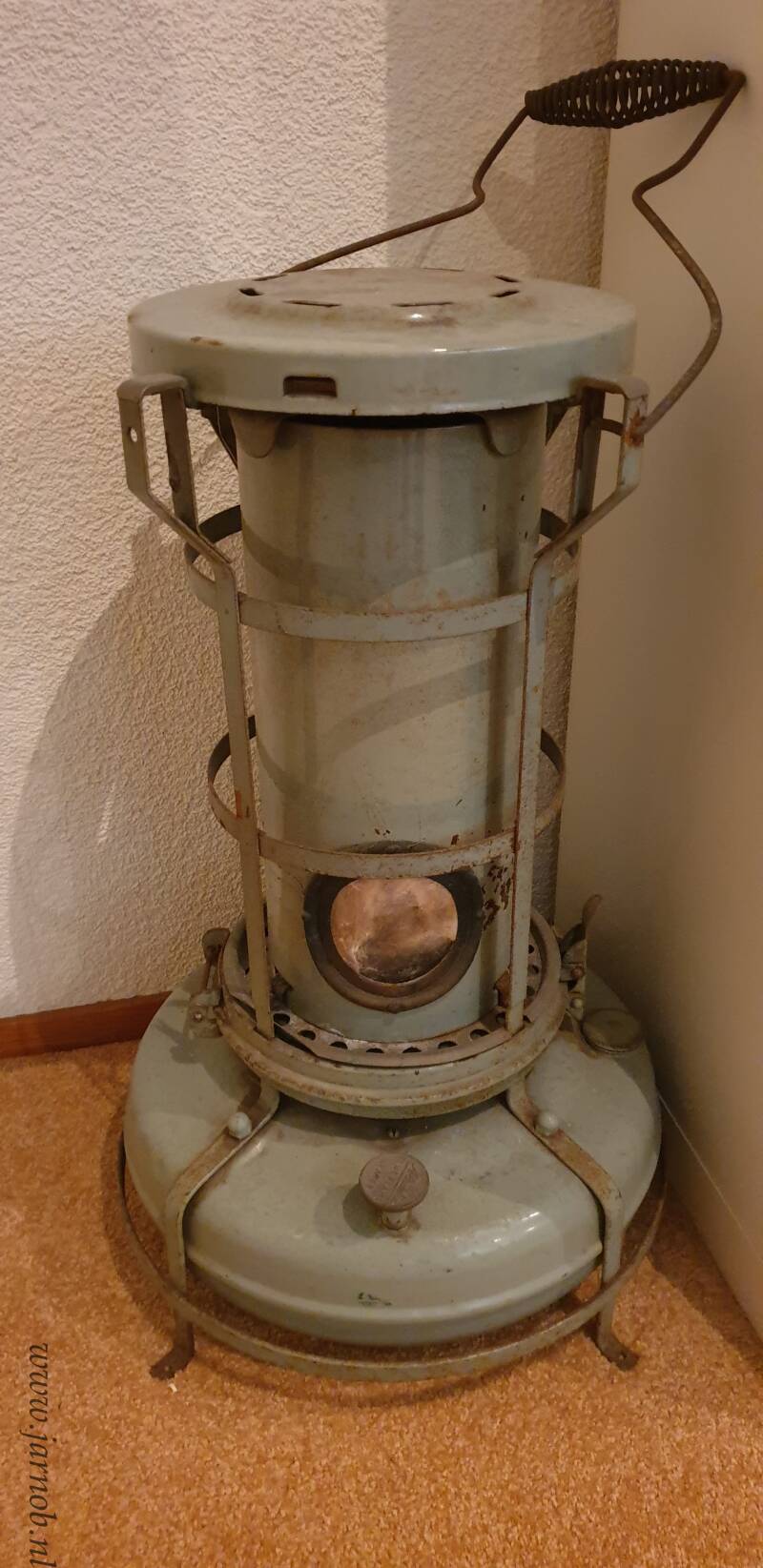
His family petrol heater used for their family during cold days.
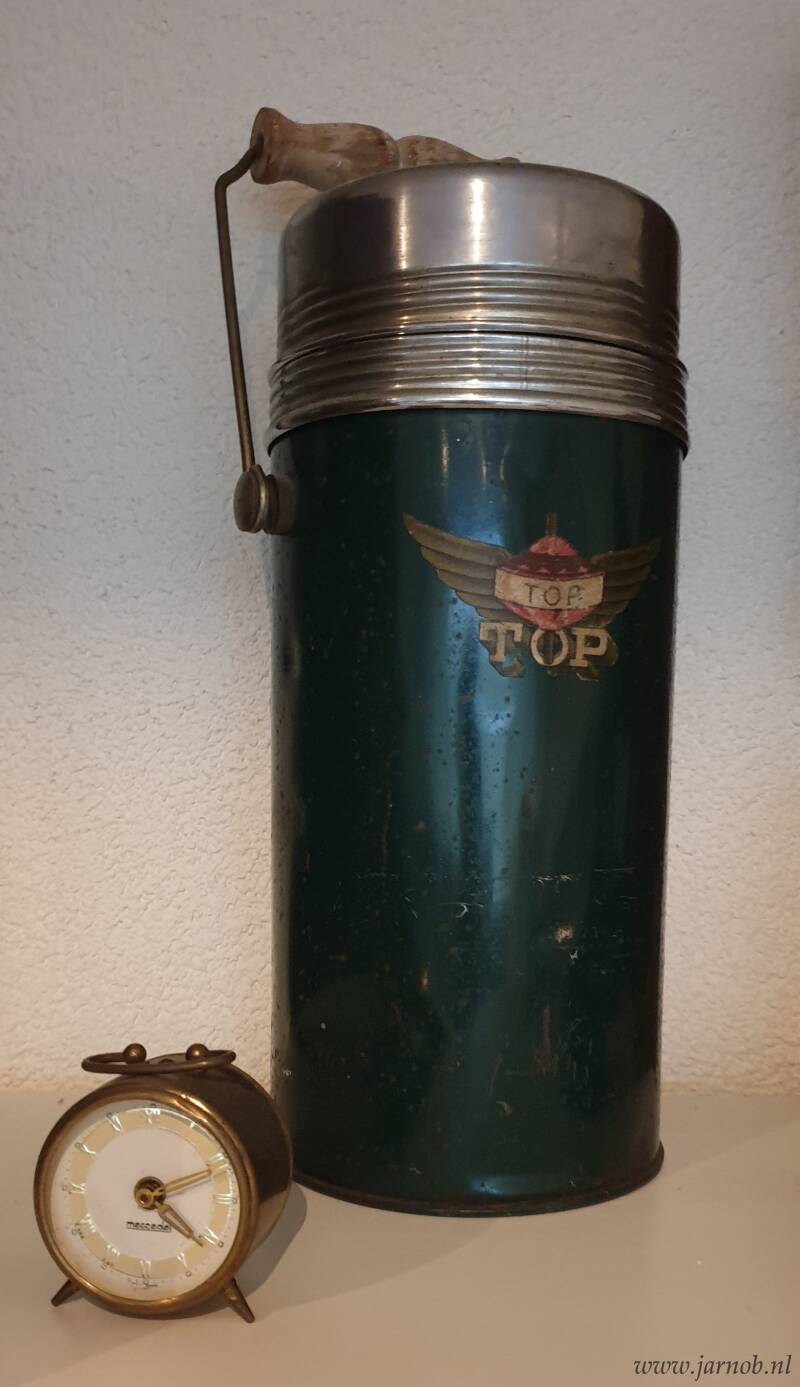
My grandfathers thermos for soup and alarm clock.
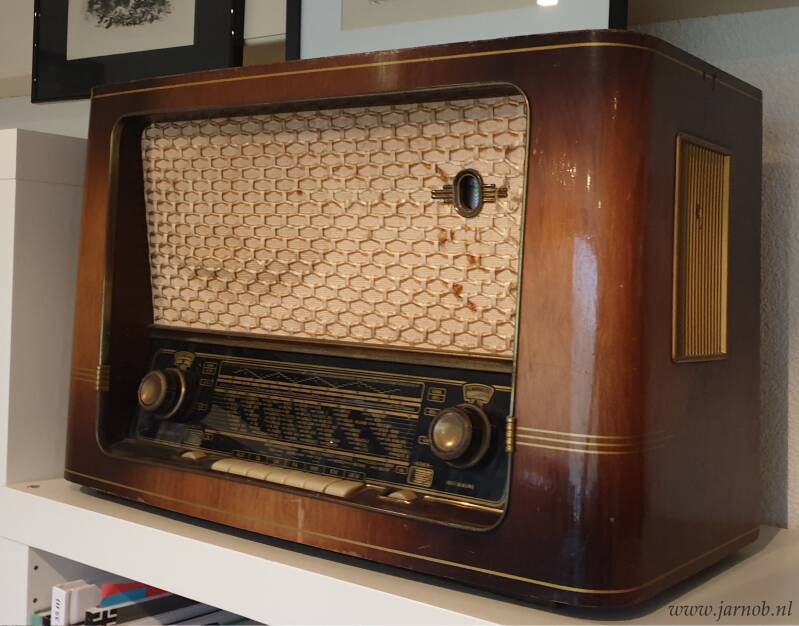
My family's original tube radio used well before television existed.
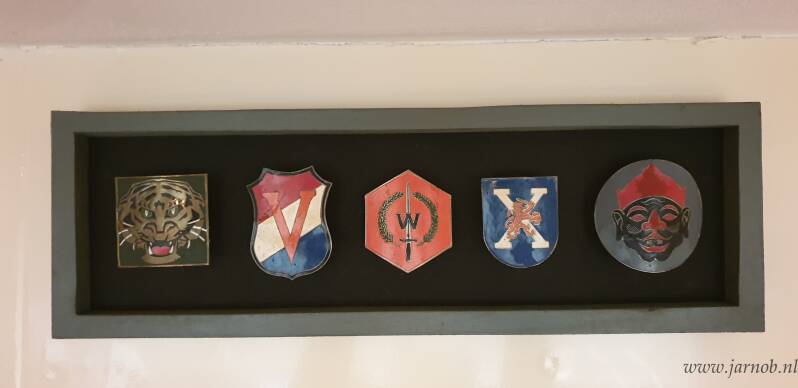
Some bought and restored KNIL post ww2 badges: T-Brigade (Tijger-brigade), V-Brigade, W-Brigade, X-Brigade and Y-Brigade (Demons Brigade), under which the Gadja Merah battalion of my grandfather was assigned. The name Demons Brigade referred to the island of Bali. Y-Brigade was founded on Bali, which was also called 'The Island of the Gods and Demons'.
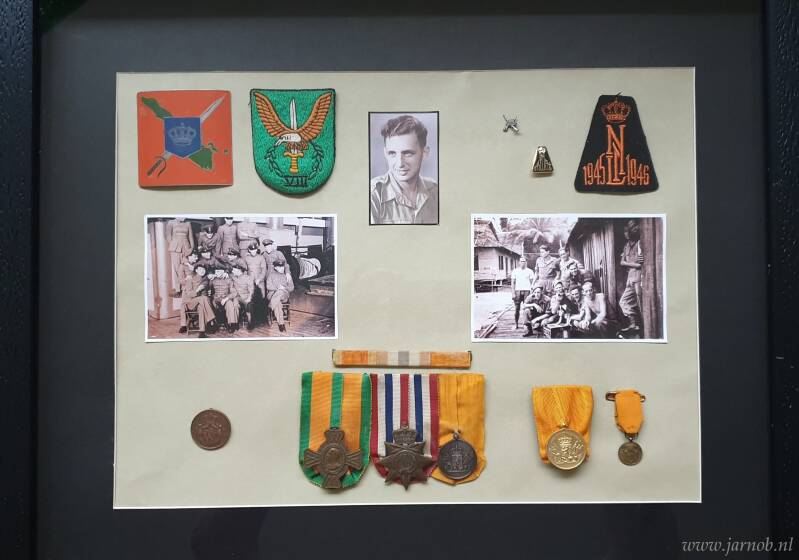
My other grandfathers, C.G. Boer, tribute.
Original medals Oorlogsherinneringskruis and Ereteken voor Orde en Vrede and original KNIL demobilisation pin. Bronze, silver and golden service medals, as well as the golden miniature service medal. Original medal bar.
Bought original Territorial Command Sumatra & surrounding islands metal badge, repro KNIL Inf.Bat. VII badge, original KNIL 'voortrekker' 1945/1946 badge and metal pin.
Two photographs of my grandfathers unit, to the left during his journey by boat 1938 to the Dutch East-Indies and to the right his KNIL platoon on the Riouw archipelago 1947.

